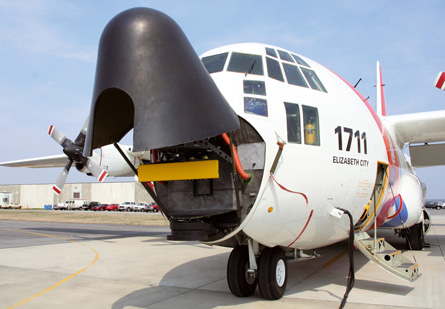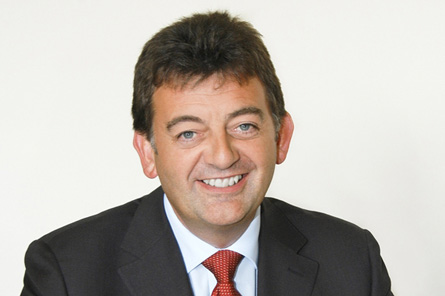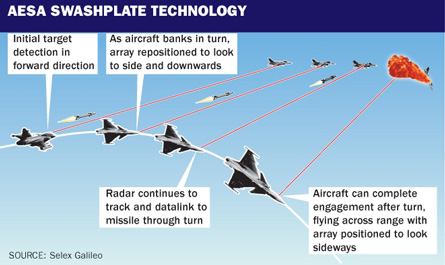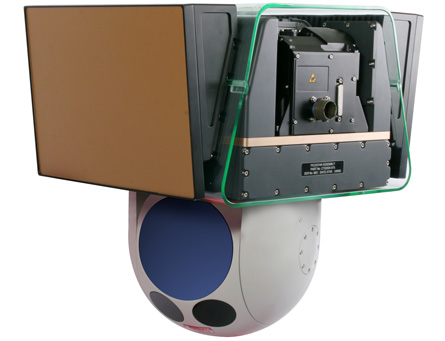Selex Galileo has undergone a significant transformation since its last visit to the show, with long-term investment in advanced radar technology and an ambitious US growth strategy now paying dividends. That's the view of Steve Mogford, managing director of the Finmeccanica subsidiary since May 2007.
"Two years ago we were operating probably as two separate companies flying in formation," says Mogford. "Since then we've driven the integration of those two organisations into a single company with a single management team, a single strategy and a single product portfolio."
Split largely between Edinburgh in Scotland and Milan in Italy, but also with a growing footprint in the US, the company's approximately 7,000 employees are dedicated to working across three core business areas, he says: "sensing, situational awareness and self-protection".
The surveillance radar sector is Selex Galileo's best known area of aviation-related activity, where it provides sensors for fighters, helicopters, maritime patrol aircraft and unmanned air vehicles. Two key technologies are employed: mechanically-scanned radars developed using investment in Italy; and a more than decade-long drive by its UK business to pursue active electronically scanned array (AESA) systems.
The latter capability has begun to secure significant sales, most notably with new customers in the North American marketplace. Active array Seaspray 7500E radars have been supplied to the US Coast Guard and integrated with some of its Lockheed Martin C-130s (below), and have recorded 1,700 operating hours without a failure.
 |
|---|
© Selex Galileo |
The US Customs and Border Protection agency recently built on this success, with the European supplier landing an almost $10 million subcontract to supply an initial two Vixen 500E AESAs to be integrated with its Cessna Citation Tracker aircraft.
Such successes have enabled the company to shift its focus from sales and marketing activities to delivering aircraft upgrades and support services. "Our main target was to sell into the US market, which we've done," says Mogford. "Now we're finding increasing success elsewhere."
The Italian defence ministry late last year selected the Seaspray 7500E as part of an airborne tactical observation and surveillance (ATOS) mission fit for its future four ATR 72 maritime patrol aircraft. Combined with an electro-optical sensor, sonics equipment and magnetic anomaly detection, this will deliver "a very powerful capability", says Mogford (below).
 |
|---|
© Selex Galileo |
Other versions of the scalable ATOS system have also recently been sold to Ecuador and Peru, with the former to use the technology on its Airbus Military CN-235 and Hawker Beechcraft King Air 300 surveillance platforms. The company has now sold 45 ATOS systems, and says it is in the final stages of negotiations to provide several more to an undisclosed Asian country. Potential buyers are also being courted in North Africa.
But Selex Galileo's highest profile radar work is linked to its activities in the fighter fire control sector. Its Vixen 1000E AESA is to fly later this year on Saab's Gripen Demo technology demonstration airframe, and the company also hopes to see the technology selected to equip the next production batch of Eurofighter Typhoon strike aircraft for partner nations Germany, Italy, Spain and the UK, as part of the multinational Euroradar consortium.
Flight tests of the Gripen Demo with the active array radar, which will undergo progressive upgrade over an 18-month period from its delivery, will demonstrate a capability which its designers believe could prove a key discriminator for future customers.
A unique "swashplate" system will enhance radar performance by allowing the sensor to be rotated by up to +/-100° while tracking targets, says Bob Mason, responsible for sales and marketing of Selex's radar products. This will deliver significant operational benefits over a fixed E-scan system, he says, for example during the deployment of beyond visual-range air-to-air missiles.
"As you fire your missile the last thing you want to do is get closer to your target," he says. "When your aircraft moves off-boresight the radar beam broadens and the capability degrades, but the swashplate takes that out."
 |
|---|
© Tim Bicheno-Brown/Flight International |
The possible inclusion of an AESA radar will be among the topics of discussion between the Eurofighter partner nations after the signature of a Tranche 3A contract for a combined 112 aircraft, which is expected to occur around the end of this month.
"We are pushing hard to table proposals and make this doable," says Mogford. "E-scan is only going to get selected if it extends the capability of the weapon system and allows it to do something that it doesn't do today. E-scan will make the Typhoon and [Lockheed Martin F-35] Joint Strike Fighter very complementary in the UK inventory, and make it very relevant to the land component."
While he expects demand for mechanically-scanned systems to continue "for some time yet", Mogford says Selex Galileo is already looking at the possibility of integrating active arrays with some of its current products, such as its Grifo fire control radar, more than 400 of which have been produced.
Meanwhile, in an example of its broadening and increasingly sophisticated product range, the company has unveiled a new UAV payload concept at the show. A development of its existing lightweight PicoSAR design, the newly unveiled Picostar incorporates synthetic aperture radar with an electro-optical sensor and a burst illumination laser radar for long-range identification tasks.
Weighing under 30kg (66lb), the design (below) could equip tactical UAVs such as the company's own Falco system, says Mason.
 |
|---|
© Selex Galileo |
Despite the current global economic downturn, Mogford says Selex Galileo's business activities have not been affected so far. "You can see the world tightening its belt. But as our customers are predominantly governments and government agencies, we're not seeing the same impact as people with a very high commercial component. And surveillance is becoming big, big business."
Source: Flight Daily News
















